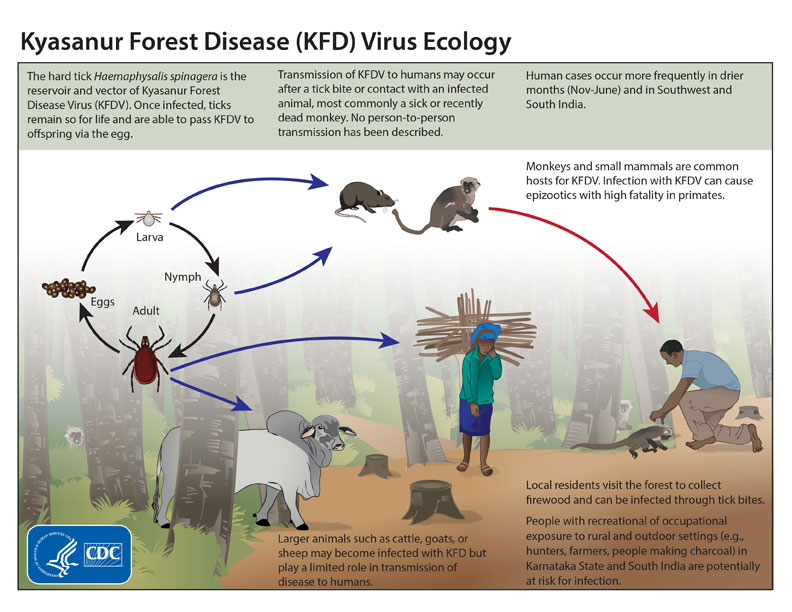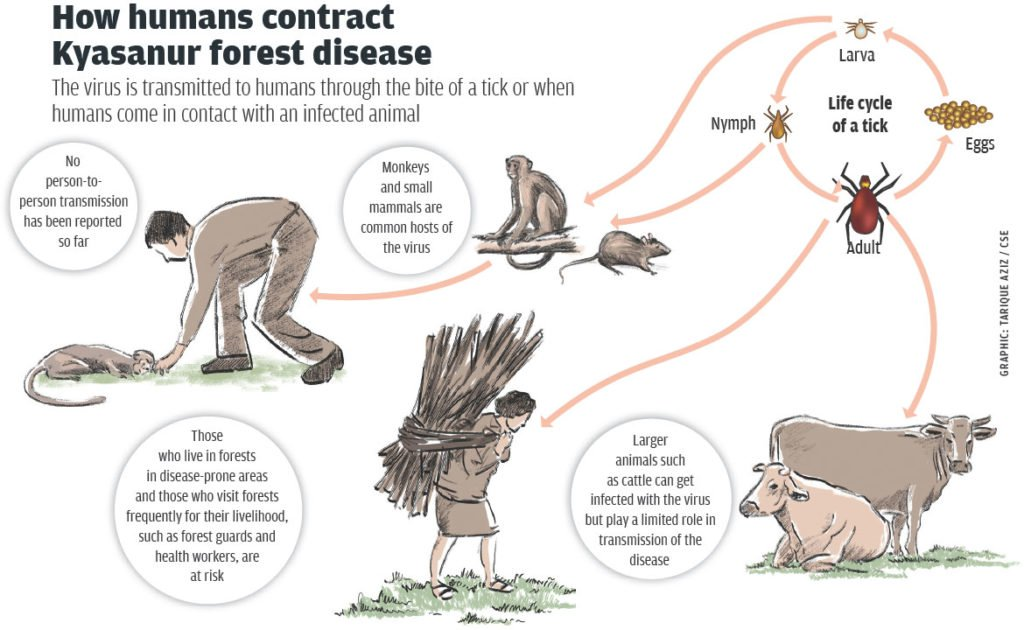Free Courses Sale ends Soon, Get It Now


Free Courses Sale ends Soon, Get It Now



Copyright infringement not intended
Picture Courtesy: en.wikipedia.org
Context: A study by the Indian Council for Medical Research (ICMR) and the National Institute of Virology (NIV) has confirmed the presence of Kyasanur Forest Disease (KFD) in Karnataka
Details
Kyasanur Forest Disease
How is KFD transmitted?

What are the symptoms of KFD?
How is KFD diagnosed and treated?
How can KFD be prevented?
Conclusion
Must Read Articles:
Kyasanur forest disease: https://www.iasgyan.in/daily-current-affairs/kyasanur-forest-disease
|
PRACTICE QUESTION Q. Case Presentation: A 35-year-old male presents to the rural health clinic with a sudden onset of fever, headache, and muscle pain. He reports a recent visit to a forested area in Karnataka. On examination, he has a high fever, enlarged lymph nodes, and a characteristic petechial rash. Given the patient's history and clinical presentation, the healthcare provider suspects Kyasanur Forest Disease. Q. What is the primary vector responsible for transmitting the Kyasanur Forest Disease Virus (KFDV) to humans? A) Aedes mosquitoes B) Anopheles mosquitoes C) Hard ticks (Haemaphysalis) D) Sandflies Answer: C Explanation : Kyasanur Forest Disease is primarily transmitted to humans through the bite of infected hard ticks, specifically ticks of the genus Haemaphysalis. |
© 2024 iasgyan. All right reserved